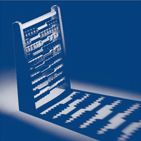With the end of the tax year fast approaching most pre year-end tax planning will have been completed or should be well under way. However, there may still be some measures which can be undertaken to improve your tax position.
Here are our top five tips to consider:
Top Five Tips
- Make full use of your personal income tax allowance and basic rate band and avoid the higher rates where possible. For higher earners the personal allowance is gradually withdrawn on income over £100,000, giving an effective rate of tax of 60% up to £125,140, so there is an added benefit of keeping income out of this bracket. For those falling into this tax band gift aid or pension contributions (subject to point 5 below) can be a tax efficient way of reducing income.
- Make full use of your annual ISA investment allowance if you can. The amount which can be invested remains at £20,000 p.a. for 2021/22. Children under 18 can have a Junior ISA and invest up to £9,000 p.a, whilst those aged 18 to 39 can open a Lifetime ISA and save up to £4,000 p.a. Investment can be in cash and/or in stocks and shares, but any investment needs to be made by 5th April and if you do not use all the allowance it cannot be carried forward to future tax years.
- Ensure you have utilised your capital gains tax annual exemption, currently £12,300. If you have made gains in excess of this and hold an asset which has fallen in value, consider crystallising a capital loss. You need to take care, however, not to fall foul of the anti-bed and breakfast rules so contact us for advice before undertaking any transaction. Again any unused annual allowance is not available to carry forward.
- Where possible, take advantage of the annual inheritance tax exemption of £3,000. The allowance can be carried forward for one tax year but will be lost if unused. In addition gifts which are ‘normal expenditure out of income’ can be made without limit. Such gifts must be made on a regular basis so action may be necessary before the year end to ensure a regular pattern is achieved.
- Ensure you have maximised your pension contributions if you are a Higher (40%) or Additional (45%) rate payer. Currently, higher and additional rate payers receive 40% or 45% tax relief on their pension contributions up to a maximum of £40,000 per annum, broadly meaning a £100 contribution only costs £60 (for higher rate payers) or £55 (for additional rate payers). The rules around pensions are complex and so specialist advice should be sought before finalising any contribution.
For those individuals who are owner shareholders of limited companies it may also be worth considering whether a dividend should be paid by 5 April 2022 or any proposed dividend brought forward in order to beat the dividend tax rise that will take effect from 6 April 2022 with an additional 1.25% being added to all the dividend tax rates. The result of the increase in the dividend tax means any dividend income above the £2,000 tax-free dividend allowance will be taxed at 8.75% for a basic rate taxpayer, 33.75% for a higher rate taxpayer or 39.35% for additional rate taxpayers
This is by no means an exhaustive list but merely some ‘quick fixes’. For a more tailored tax planning review please contact our Tax Director Jenny Marks.
Our Current working arrangement – We remain ‘Open for business’
Our staff have now returned to mainly office based working, whilst continuing to work from home at other times. They can still be contacted in the usual way either via email or by calling the office number where reception will divert your call to the appropriate staff member.
To see our other news items please visit our Muras Baker Jones – Blog.



